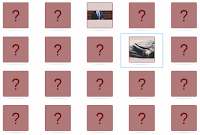Today we are practicing how to say where you are in Serbian with the following words:
Places in City in Serbian
- BANK: Banka - u banci
- CHURCH: Crkva - u crkvi
- BUILDING: Zgrada - u zgradi
- GALLERY: Galerija - u galeriji
- PHARMACY: Apoteka - u apoteci
- MUSEUM: Muzej - u muzeju
- PARKING: Parking - na parkingu
- AERODROM: Aerodrom - na aerodromu
Gde ste? Where are you?
Time to practice pronunciation

.png)


























